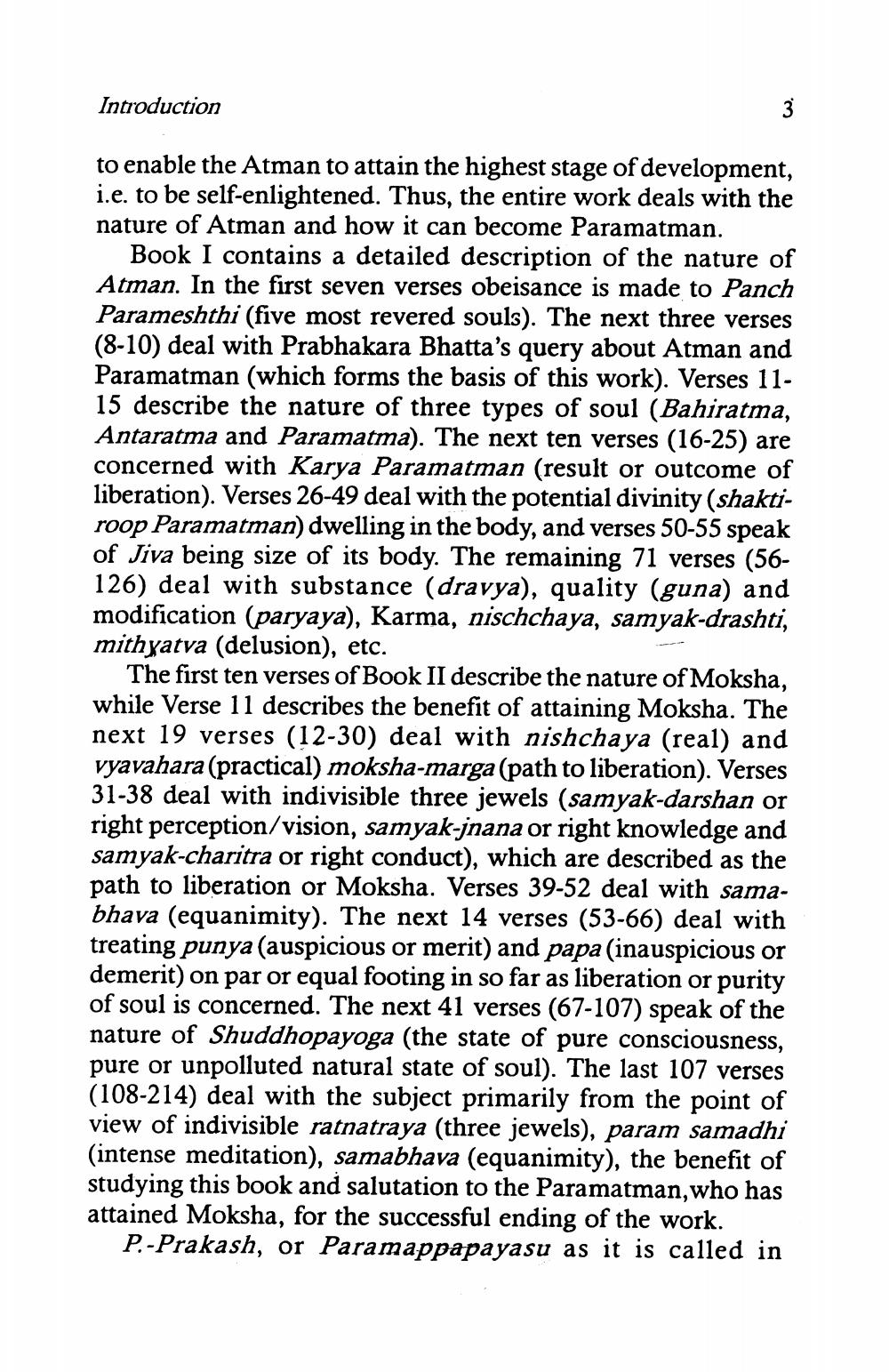________________
Introduction
to enable the Atman to attain the highest stage of development, i.e. to be self-enlightened. Thus, the entire work deals with the nature of Atman and how it can become Paramatman.
3
Book I contains a detailed description of the nature of Atman. In the first seven verses obeisance is made to Panch Parameshthi (five most revered souls). The next three verses (8-10) deal with Prabhakara Bhatta's query about Atman and Paramatman (which forms the basis of this work). Verses 1115 describe the nature of three types of soul (Bahiratma, Antaratma and Paramatma). The next ten verses (16-25) are concerned with Karya Paramatman (result or outcome of liberation). Verses 26-49 deal with the potential divinity (shaktiroop Paramatman) dwelling in the body, and verses 50-55 speak of Jiva being size of its body. The remaining 71 verses (56126) deal with substance (dravya), quality (guna) and modification (paryaya), Karma, nischchaya, samyak-drashti, mithyatva (delusion), etc.
The first ten verses of Book II describe the nature of Moksha, while Verse 11 describes the benefit of attaining Moksha. The next 19 verses (12-30) deal with nishchaya (real) and vyavahara (practical) moksha-marga (path to liberation). Verses 31-38 deal with indivisible three jewels (samyak-darshan or right perception/vision, samyak-jnana or right knowledge and samyak-charitra or right conduct), which are described as the path to liberation or Moksha. Verses 39-52 deal with samabhava (equanimity). The next 14 verses (53-66) deal with treating punya (auspicious or merit) and papa (inauspicious or demerit) on par or equal footing in so far as liberation or purity of soul is concerned. The next 41 verses (67-107) speak of the nature of Shuddhopayoga (the state of pure consciousness, pure or unpolluted natural state of soul). The last 107 verses (108-214) deal with the subject primarily from the point of view of indivisible ratnatraya (three jewels), param samadhi (intense meditation), samabhava (equanimity), the benefit of studying this book and salutation to the Paramatman, who has attained Moksha, for the successful ending of the work.
P.-Prakash, or Paramappapayasu as it is called in




